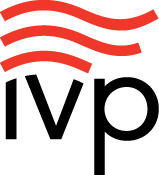How IVP Joined the Ebook Era
The ebook era was predicted long before it arrived. A post on Government Book Talk, the blog of the United States Government Printing Office, notes that a writer named Bob Brown wrote a book—in 1930!—describing his concept for “readies” [/reed-eeze/] using the same technology that enabled the “talkies” in that era. But it wasn’t until 1971 that Michael Hart launched Project Gutenberg and digitized the United States Declaration of Independence, creating the world’s first ebook. Throughout the 1980s and 1990s, two pioneering companies published books on CD-ROM (The Voyager Company) and floppy disk (Digital Book, Inc.). And then, in 1998, two ebook readers were launched: Rocket Ebook and Softbook.
Experimental Beginnings
This is where InterVarsity Press joins the story. IVP was the first Christian publisher to make books available on a dedicated ereader, working with NuovoMedia to prepare five titles for their Rocket Ebook device. The ereader had an LCD screen, and it could hold up to ten ebooks at a time (which were uploaded to the device from a computer). The ereader was sold through Barnes & Noble, Powells, and other stores. But Rocket Ebooks didn’t catch on with the book-reading public, and, along with several other early ereading devices, they eventually disappeared.
Early 2000's
IVP entered the CD-ROM-based ebook marketplace in 2000, partnering with IVP/UK to produce The Essential Reference Collection for the Logos platform. This stream within ebook publishing was very successful, and IVP produced several more CD-ROM titles with Logos during that decade.
Then, during the momentous year of 2001, several events occurred that catalyzed IVP’s ebook experimentation:
- Our Sales and Marketing department hired its first internet and special markets sales manager
- Our Editorial department hired its first associate editor of electronic publishing
- IVP's executive leadership team established the "E-team," pulling together these two new staff positions with others from design, information technology, and production to brainstorm, collaborate, and advance action on the IVP website, electronic rights, ecommerce, CD-ROMs, and ebooks
By the end of that year, the E-team had produced and launched for sale on IVP’s website Islam: A Christian Introduction, a stand-alone chapter taken from a larger text, Neighboring Faiths, by Winfied Corduan. We offered the title in five ebook formats: HTML, PDF, PRC (MobiPocket Reader), PDB (Palm Doc), and LIT (Microsoft Reader). In addition to being IVP’s first home-grown, directly-sold ebook, it was also meant to educate Christians about Islam, since so many questions were being asked and so much misinformation being spread in the wake of the September 11, 2001, terrorist attacks in the United States.
In a time when ebooks were mainly read on desktop or laptop computers or on handheld PDAs (personal digital assistants), Islam: A Christian Introduction did very well—selling more than 1,000 copies.
IVP was in auspicious company in the early 2000s, as forward-thinking writers like Stephen King, industry-leading publishers like Random House and HarperCollins, and entrepreneurial tech companies like Sony launched experiments in digital reading. But it wasn’t until 2007, when Amazon launched its Kindle ebook reader, that the long-predicted ebook era finally seemed to dawn. On the heels of Amazon’s breakthrough ereading device came Barnes & Noble’s Nook, Apple’s iPhone, and Sony/Overdrive’s network enabling library lending for ebooks.
To take quickest advantage of the opportunity presented by the Kindle, IVP sent a pallet of 500 titles to Amazon, allowing them to scan and convert the printed books into the proprietary file format that was used by their first-generation ereaders. In July 2008, we got our first sales report and payment: we earned $32.96 on sales of 5 ebook files.
By 2009, IVP’s E-team was replaced with a dedicated digital publishing department, and this team was charged with rapidly scaling a program to digitize new titles as they were launched, to digitize as many “backlist” titles as possible, and to establish sales and distribution partnerships with ebook retailers serving consumers, academic institutions, and libraries, both in the US and abroad. The digital publishing department received help from nearly every other part of IVP, especially the information technology team. Once, even an IVP reader and fan assisted these efforts, donating ebook files he had created for Calvin Miller’s classic gospel retelling, The Singer.
Along the way, we heard from a variety of pastors, missionaries, students, professors, businesspeople, and many others about the ways that ebooks were making their ministry or work more effective, making periods of travel more fruitful, making sight disabilities or physical book storage limitations more manageable, and on and on. It was clear that, while they will never replace print books, ebooks do help IVP to more fully achieve its mission—reaching and serving those in the university, the church, and the world by publishing resources that equip and encourage people to follow Jesus as Savior and Lord in all of life.
2010 to Today
During the last decade, demand for ebooks from IVP has continued to grow strongly. In 2016, we integrated into our core departmental structures and processes the last elements of the digital publishing program. Now digital publishing is just a part of what we all do, whether in editorial, design, rights, production, marketing, sales, accounting, fulfillment, or customer service. You’ll find IVP ebooks nearly everywhere, from consumer retailers (Amazon, Barnes & Noble, Christian Book Distributors, Apple iBookstore, Google Play), academic retailers (Follett, Chegg, VitalSource), library retailers (Overdrive, EBSCO, Ebrary), international retailers (Amazon, Kobo, Christian Arts), and unique channels (Logos, OakTree, Laridian, ReadHowYouWant).
And the ebook era has really just begun. Stay tuned with us to see what happens next!
(Note: See Heart. Soul. Mind. Strength. An Anecdotal History of InterVarsity Press, 1947-2007 for more detail on the history of this era.)



